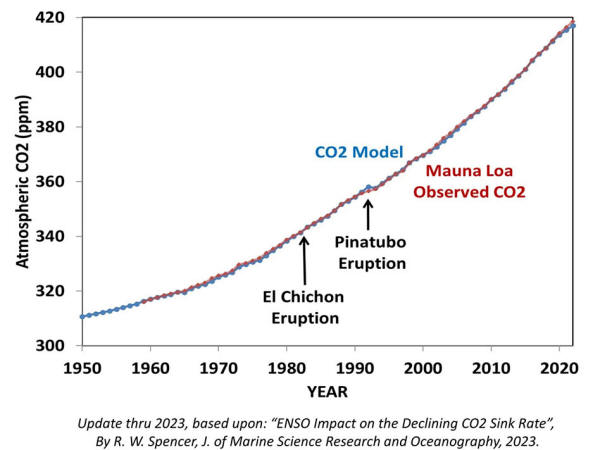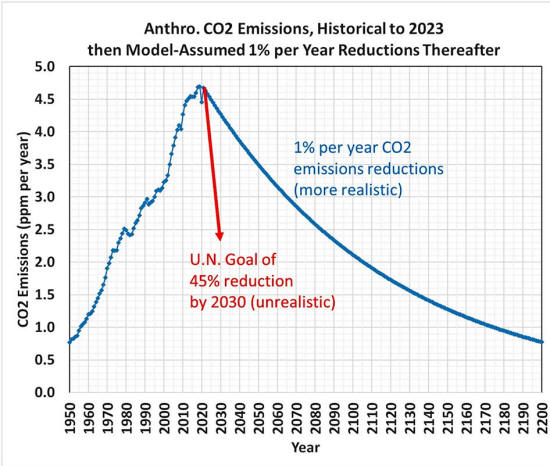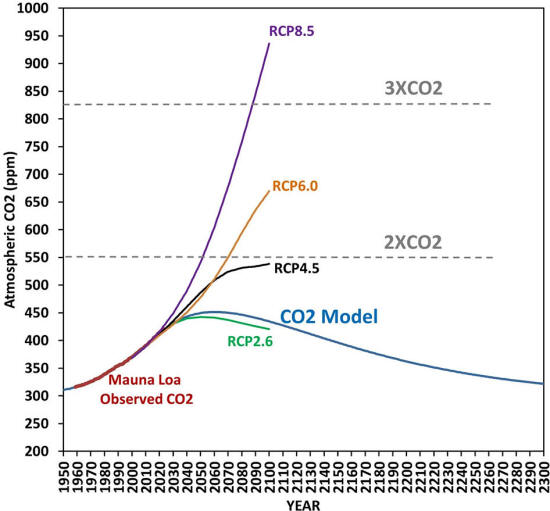|
by Roy W. Spencer, Ph.D.
While humanity
continues producing CO2 at increasing rates (with a temporary pause
during COVID), how can we ever reach the point where these emissions
start to fall, let alone reach zero by 2050 or 2060?
Why is that?
It has been observed that the more CO2 there is in the atmosphere, the more quickly nature removes the excess.
The NASA
studies showing "global greening" in satellite imagery since the
1980s is evidence of that.
The purpose of the paper was to not only show how well a simple CO2 budget model fits the Mauna Loa CO2 measurements, but also to demonstrate that the common assumption that nature is becoming less able to remove "excess" CO2 from the atmosphere appears to be an artifact of El Niño and La Niña activity since monitoring began in 1959.
As a result, that 2% sink rate has remained remarkably constant over the last 60+ years. (By the way, the previously popular CO2 "airborne fraction" has huge problems as a meaningful statistic, and I wish it had never been invented.
If
you doubt this, just assume CO2 emissions are cut in half and see
what the computed airborne fraction does. It's meaningless.)
Specifically, they say 45%
reductions below 2010 levels will need to be made by 2030, and Net
Zero will need to be achieved by 2050, in order to limit future
global warming to the (rather arbitrary) goal of 1.5 deg. C.
Here's a plot of the history of global CO2 emissions, and how that trajectory would change with 1% per year reductions from 2023 onward.
(Even this seems optimistic, but we can all agree
the U.N.'s
goal is delusional...),
Also shown for reference are the
four CMIP5 scenarios of future CO2 emissions, with RCP8.5 often
being the one used to scare people regarding future climate change,
despite it being extremely unlikely.
The reason is that nature removes CO2 in proportion to how
much excess CO2 resides in the atmosphere, and that rate of removal
can actually exceed our CO2 emissions with modest cuts in emissions.
But that's not
true, because that's not how nature works...!
|





